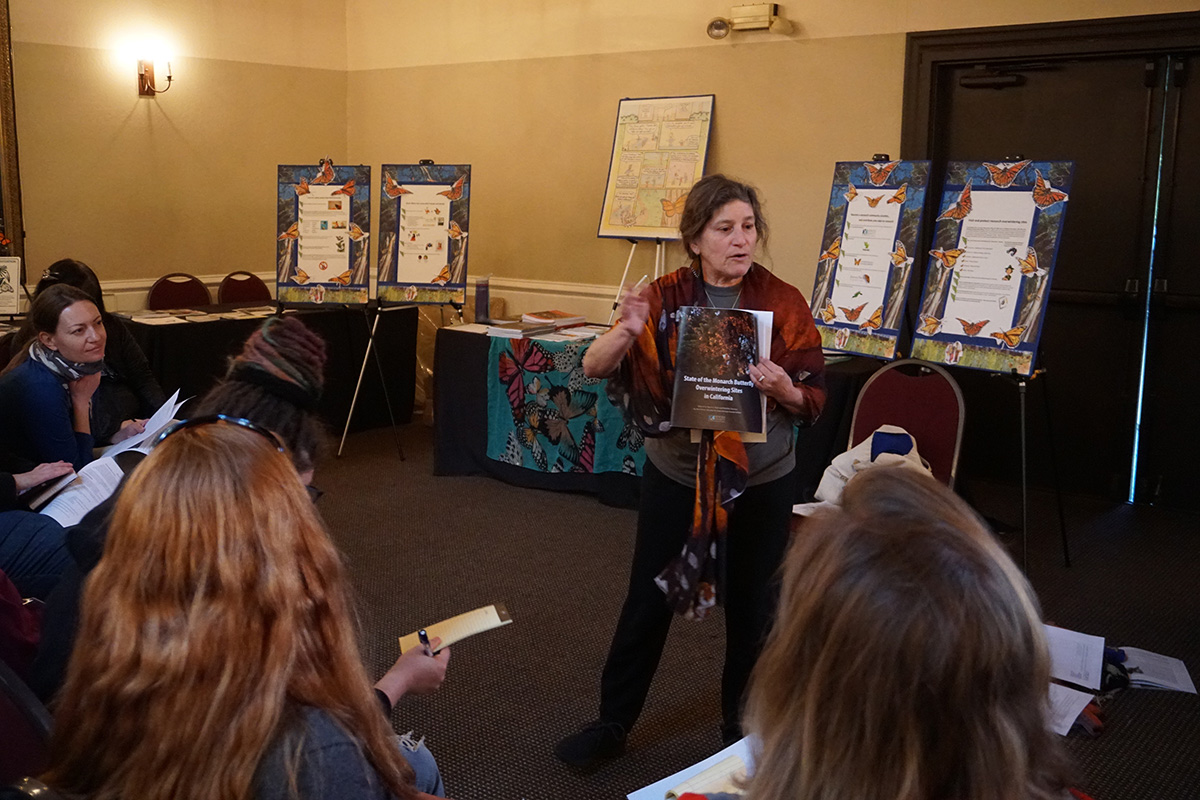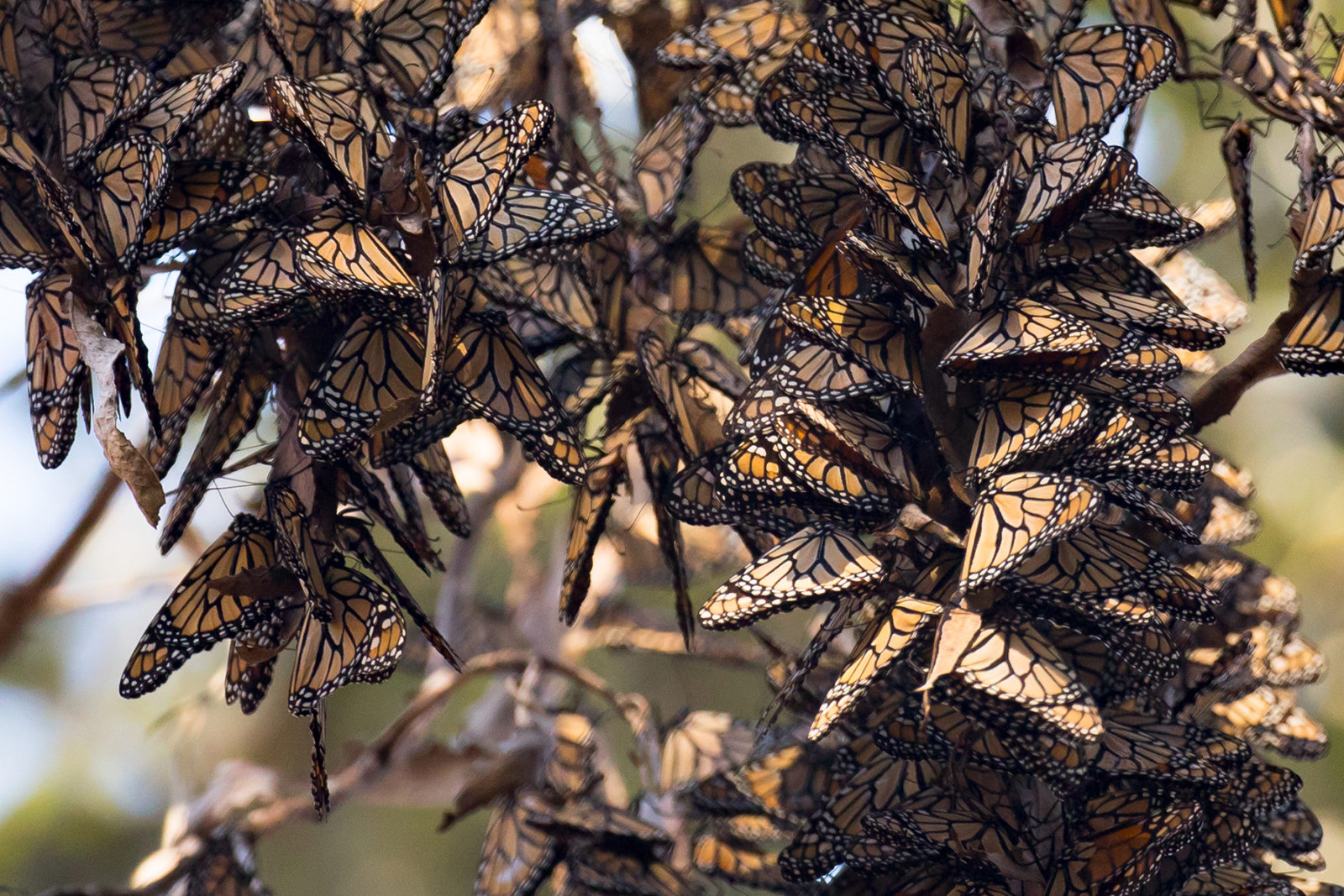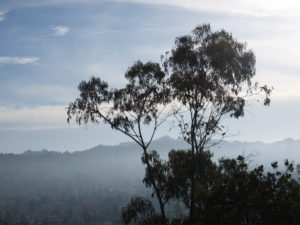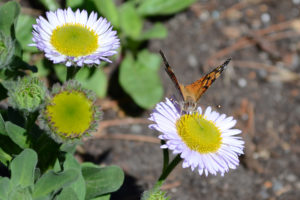Most everyone wants to save the monarch butterflies. But it turns out that when you put a bunch of lepidopterists, land managers, gardeners, and butterfly enthusiasts in one room — in a blaze of monarch T-shirts, monarch scarves, monarch earrings, monarch shoes, and one monarch bowtie – there can be some disagreement about how exactly to do so.
The monarch butterfly population on the West Coast has been trending downward since the 1980s, but early in 2019 the insects really made the news when numbers from annual Thanksgiving and New Year’s counts dropped below 30,000, the point at which scientists say the butterflies might not be able to recover.
The official data from this winter’s recent counts is still streaming in, but Mia Monroe, the coordinator for the Western Monarch Counts, shared preliminary estimates this week. And they’re not great. The numbers this year remain as low as last year’s numbers. We didn’t see a rebound. The upside, Monroe says, is that the numbers didn’t drop either; they’re holding steady.
With the western monarch’s dismal numbers top of mind, about 160 people from all over the country gathered in Carmel in early January, in a conference room lined with painted butterflies, for the first-ever Western Monarch Summit. Researchers and community scientists, forest service representatives and environmental educators, Master Gardeners and home gardeners all found their way there. People flew in from Massachusetts, Ohio, Indiana. I met a woman from Hawaii wearing a jacket with butterflies airbrushed on it who identified as a monarch “rancher” because she finds caterpillars in her garden and then raises and sells them for release at weddings and funerals.
Robert Coffan, chair of the Western Monarch Advocates group, which organized the conference, told me he wanted to bring together all the different people, from the scientists to the laypeople, and their different perspectives on what to do about monarchs. Usually such conferences are siloed off for just researchers or just conservation advocates.
The conference agenda was packed with scientists from all over the country sharing their latest research on the monarch species. Everyone seemed eager to listen and learn. But occasionally during the Q&A sections, the audience comments revealed that all was not necessarily unanimous in the monarch kingdom. A 90 percent population decline in a decade and a beloved species approaching extinction create the kind of pressures that magnify minor disagreements among well-meaning people. This is, after all, a butterfly many of us grew up with. Bay Area residents might recall raising monarchs for school projects or travelling to monarch sanctuaries like the one in Pacific Grove to see the butterflies by the thousands in the winter, clinging to the trees in heavy clusters like grapes.

And so there are debates about what to do to help. Should you plant milkweed? Should you plant it near the coast? Should you plant tropical or native species? Is it OK to raise and transport wild butterflies? Is it OK to release wild butterflies? Each of these has a pro and con, and each has someone who’s already charging ahead with it, convinced it will be the thing that saves the dwindling western monarch.
Though monarchs take up most of the attention – there’s no equivalent annual summit or “rancher” for the threatened mourning cloak butterfly, for example — the crisis isn’t unique to them. “The majority of butterflies are in some sort of decline” across Central California, said University of Nevada, Reno biologist Matt Forister. At the summit Forister shared data from UC Davis entomologist Art Shapiro’s study, one of the longest running studies of insects in the United States. The research shows that there are about 20-30 other butterflies doing worse than the monarch, like the common sootywing butterfly. “When I was growing up in the Central Valley, it was dirt common,” Forister said. “You can’t call it that anymore.”
What’s causing the decline? Washington State University conservation biologist Cheryl Schultz told the crowd, “There’s no smoking gun.” There’s climate change, of course: warmer and drier conditions, but Dr. Schultz didn’t want people to only focus on that. She also pointed to habitat loss, like farmland where monarchs used to breed being developed, and pesticides like neonicotinoids in plants eaten by caterpillars. “It’s not to say climate change isn’t important,” Schultz said. “But to only focus on that would make it seem like it’s out of our hands when there’s a lot in our hands, in terms of land use questions.”

The drama (and I should emphasize: it’s very polite drama) occurred when it was time for the updates from regional butterfly groups. Dennis Triglia of the Southern Oregon Monarch Advocates group stepped up to the mic to tell the story of a butterfly named “Ovaltine” or “Ms. O,” a single monarch butterfly that laid over 500 eggs at a butterfly garden in Brookings, Oregon this past year. There wasn’t enough milkweed to feed all these soon-to-be caterpillars. Because Oregon’s monarch counts had been so low, a state-wide response set into action. People from all over Oregon volunteered to take some of the eggs and raise them themselves in their own gardens, despite the fact that most scientists discourage this practice of “captive rearing” of wild monarchs. Under the volunteers’ watch, the eggs from this one butterfly hatched caterpillars that turned into adults and laid more eggs, which resulted in thousands of adult monarchs being tagged with scientific tracking stickers and then released back into the wild. (Some of those tagged butterflies ended up being found in the Bay Area after flying more than three hundred miles to get here.)
“If these volunteers followed recommendations from well-meaning conservation organizations [who discourage captive rearing] this whole thing wouldn’t have happened,” Triglia told the audience. “I see both sides to the story but in this case I think we were justified.”
The monarch “rancher” from Hawaii burst into applause.
The “well-meaning conversation” organization he was alluding to, the Xerces Society which organizes the annual monarch counts, didn’t respond directly to Triglia’s comment. After the conference, count coordinator Mia Monroe told me, “If it seemed like people were tiptoeing, I think it was because [the conference] was all about building bridges and trust.”
Karen Oberhauser, the former director of the monarch lab at the University of Minnesota, who has been studying monarchs for 35 years, pointed out that scientists depend on volunteers for data. There’s a long tradition of essential amateurism in lepidoptery. Community scientists have been counting monarchs and contributing to science’s understanding of the species for decades. It has to be a two-way street.
The variety of people in attendance at the conference “represents the new paradigm that comes about from iNaturalist, crowd-sourcing, and people being empowered to learn,” Monroe said. “All the data and info isn’t just in the hands of scientists. We all wish to take responsibility for our world.”





